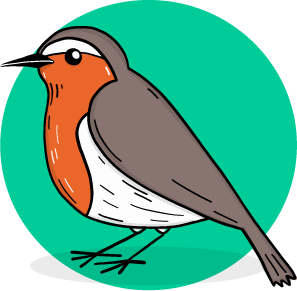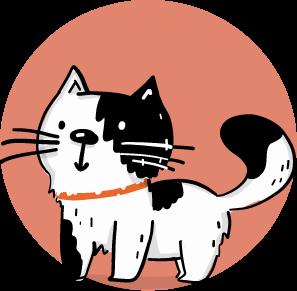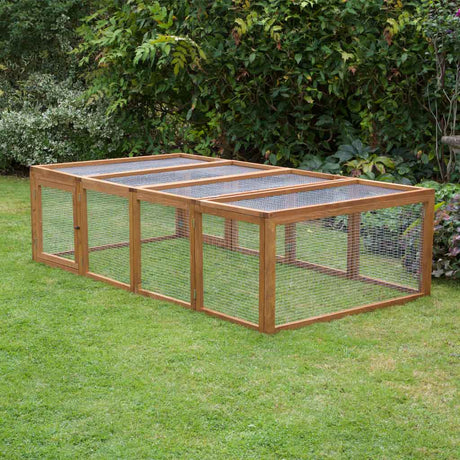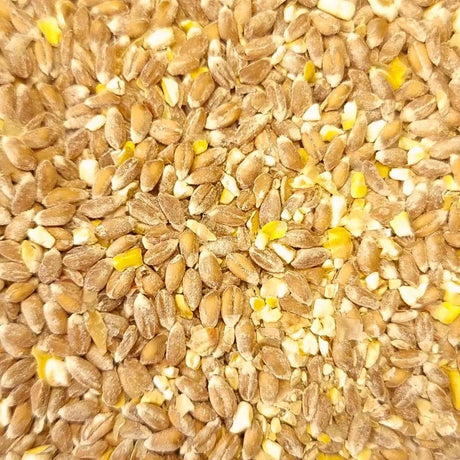All hedgehogs need our help. But autumn juveniles are the most vulnerable group and need our support most of all. As we move through September into autumn and winter, it is vital to keep a lookout for these young hogs and offer help when they need it.
In this article, we are going to look at how to identify and help autumn juvenile hedgehogs.
Watch Out for Autumn Juveniles
What is an Autumn Juvenile Hedgehog?
Most hedgehogs have their first litter of young in June or July. This gives the young hogs plenty of time to fatten up for hibernation in October or November.
Some hogs, however, have a second litter in September or even October. These hoglets have only a short time before the weather gets cold and food becomes scarce.
Hedgehogs need to weigh at least 500gms to survive winter hibernation. Hoglets born in a second litter may struggle to reach this weight before winter sets in.
These are autumn juveniles.
Why Are Autumn Juveniles Important?
Unlike many small mammals, including rabbits, mice and guinea pigs, hedgehogs do not breed in their first year. They only mate after their first hibernation. So a hog that doesn’t make it through the first winter will never breed and will never contribute to the continuation of the species.
Hedgehogs are now officially an endangered species in the UK. So it is vital to ensure that as many young hogs as possible make it through the first winter and have a chance to “do their bit” for the continuation of the species.
How To Spot an Autumn Juvenile
A healthy, fully grown hedgehog ready for hibernation should look about the size of a small loaf of bread.
Smaller than that and they are probably not at a good weight to face hibernation.
So, in September and October, if you spot a hog which looks smaller than a small loaf of bread, this is probably an autumn juvenile and may need your help.
How To Help Autumn Juveniles
Once you have identified an autumn juvenile, you need to decide what to do about it, and this will very much depend on when you see it, what it looks like and what the weather is doing.
Offer Food and Water
Providing food and water for your local hogs is always important, but never more so than in the autumn.
Whether you offer your food in a feeding station or just place dishes in the garden, make sure you are well stocked in the autumn months. Ideally, dishes should have a little food left in them in the mornings. If the dishes are empty, you are not putting out quite enough to satisfy everyone.
Daytime Visitor?
Hogs are nocturnal; if they are out in the daytime, they are generally in trouble. This goes double for autumn juveniles. Any hog who is wandering your garden during the day in September, October or later needs your help.
Daytime hogs may look wobbly or sleepy. They may be curled up in the open. If they do this they are not sleeping or hibernating; they probably have hypothermia. In autumn and at any time of year, a hog displaying these symptoms needs to go straight to your local hedgehog rescue.
During the breeding season, you sometimes see females out during the day getting food for hoglets in the nest or gathering nesting materials. The hog will look active and purposeful.
But a daytime hog out in autumn, looking active and purposeful, is probably an autumn juvenile desperately trying to feed. They may not be ill, and they probably don’t need specialist attention. But they do need your help.
In the autumn, any hog you see out and about in the daytime needs your help.
Weigh The Hog
If you have a nighttime visitor who looks smaller than a small loaf of bread, or a healthy-looking daytime visitor, you need to weigh them to decide what to do.

This should be reasonably easy to do. It won't hurt them or traumatise them, although they may well curl up. Return the hog to the exact place you found it as soon as you have finished the weigh-in.
It won't hurt you either as long as you remember to use a towel or a thick pair of gardening gloves to pick the hog up.
- If the hog weighs under 300gms, they are very young and not fully weaned yet (orphans), or very sick. They need to go to a rescue centre as soon as possible.
- If the hog weighs over 500gms, they are probably going to be fine for the winter. Keep providing food and water and leave them to get on with it.
- If the hog weighs between 300 and 500gms but otherwise looks fit and healthy, he needs your help but probably doesn’t need a rescue centre.
Making the Right Decisions
When you have an autumn juvenile who weighs between 300 and 500gms, there is no clear cut right or wrong thing to do; everything is a judgement call and will depend on the circumstances.
The only thing that is definitely wrong is to do nothing. If you do nothing, the hog will almost certainly not make it through the winter.
Continue to Feed and Weigh
Leaving the hog in the wild may be the right thing to do if the circumstances are right:
- The hog is fit and healthy.
- The hog visits you for food regularly every night.
- You don’t see the hog in the daytime.
- The hog weighs over 400gms.
- The weather is still reasonably mild.
- And there is still some natural food about.
In these circumstances, you could continue to put out food and water nightly and continue to weigh the hog every few nights.
It may well be that the hog can put on the weight it needs and go into hibernation in the wild.
But if the situation changes or the hog is not putting on weight, you may need to offer more care.
Rescuing Autumn Juveniles
Sometimes a few weeks of feeding and monitoring in the wild will be all the help that an autumn juvenile needs. They will put on the weight they need and should have a successful hibernation.
But other times the hog may need to be taken in to care if it is to survive the winter and go on to breed successfully next year.
You should consider taking an autumn juvenile into care if:
- He is still underweight by mid-October.
- He is out in the daytime.
- He is not gaining weight.
- The weather has turned very cold.
In these circumstances, a young hog is going to need to be taken in and given food and shelter.
Your local hedgehog rescue will, of course, take the hog and we would generally suggest that you take any hog that needs help straight to trained rescuers.
But healthy autumn juveniles are a special case. They are not sick, or very young they just need some shelter and the chance to fatten up a bit.
Whilst a sick hedgehog or a baby will have complex needs; a fit, the healthy juvenile is quite easy to care for.
And of course, there will be a lot of them about. So your local rescue centre is likely to be super-busy in the autumn.
So, if you have the time, space and confidence, there is no reason why you shouldn’t care for an autumn juvenile yourself. It’s easier than you think and can be very rewarding.
We have everything you need to know in your guide to rescuing and overwintering hedgehogs here.
Conclusion: Do the Right Thing for Autumn Juveniles
Autumn juvenile hedgehogs are uniquely vulnerable and have an essential part to play in the survival of the species.
These hogs, born late in the year, face a real challenge to gain the weight they need for a successful hibernation.
That’s why it’s so vital that we keep an eye out for them and give them the support they need.
In this article, we have looked at how to spot an autumn juvenile and decide what help they need. In part two, we are going to look at caring for and overwintering autumn juveniles.
We hope you’ve found this article useful. If you have any questions or suggestions, we would love to hear them, please leave a comment below.
And to read more on helping hedgehogs, visit our hedgehog blog here.









4 comments
Hi, I have just rescued a Hog from running around a main road, I picked him (or her) up and brought it home. It is small ish, ut I don’t THINK too small, it’s in a box on a towel in the dark with some high protein puppy food (meat) and water. I have a hedgehog hotel under our trampoline that I bought this year as we have had 2 on our doorstep as well!
I released them but they didn’t stay :(
Do I pop this one out and put more food down? Do I close them in so they can’t get out and have to hibernate? Or just pray they stay??
Thank you, Alana.
Please delete the comment telling people to look after autumn juveniles themselves that’s ridiculous. I’m very disturbed, shocked plus annoyed to read you telling the general public there’s no reason why you can’t look after hedgehogs yourself. This isn’t correct, hedgehogs have very complex needs and should only be cared for by trained people. How would the general public know what a healthy hedgehog actually looks like or what a sick hedgehog looks like. It’s not that easy to tell if that person hasn’t been trained to know what to look out for. Hedgehogs need to be health checked and poo tested for internal parasites e.g. fluke, cap, lungworm, cocci, thorny headed worm etc. Plus other nasties ringworm, mange, ticks, fly strike all need treating.
Please edit your article removing the text saying you can look after hedgehogs yourself as it’s giving the general public the complete wrong impression which could lead to hedgehogs perishing due to not receiving the correct care and treatment they deserve. Thank you
I am unsure what to do . I have a family that comes each year . However I saw a small hedgehog eating food in November then it went quiet so guessed hibernated. Now I am in January of 2022 and saw my outside light coming on and off when up late one night . To my surprise there was a small hedgehog eating the bird foods and dried food pellets I leave out .Can it survive the remainder of the winter till March ?
Hi Gem,
The trouble will be that when the nighttime temperatures drop to below 5c every night for a week or so your hog may try to hibernate, despite the fact you are still providing plenty of food. At 370gms it will not have the fat reserves it needs to survive hibernation. If you take it into the house, you can keep feeding it and because it’s warmer it will not try to hibernate. You might need to keep it all winter. Or if you get the weight up to over 500gms and we have a mild spell you could release it to hibernate outside midway through the winter. Some people don’t release mid-winter, but once the hog is up to weight will move the box into an unheated outbuilding so the hog will go into hibernation.
It won’t hurt a hog at all to stay awake all winter as long as it has plenty of food and water and warmth.
Hope this helps.
Best of luck
Clare